
Whether you’re after an M16A1 clone or another iconic military firearm replica, there are a few different ways to go about it.
The early years of the Vietnam War saw the AR-15 as the Colt M16, a supposedly space-age rifle that rejected notions of wood and blued steel, and instead went for plastics and aluminum. It was the image of the new dawn, where Americans were graduating into a degree of combat lethality the likes of which had never been seen.
Unfortunately, this wasn’t the case in the field, and the use of the M16 in combat proved to be a faith-shaking experience. Where the American in WWII had a dependable, powerful and accurate rifle, the soldiers in Vietnam were left with rifles that fit none of those criteria.
The M16 eventually became a mature system after much trial and error. It’s the progenitor of the most effective and common rifles in use today, most of which only bear a passing resemblance to the common M16A1. Because of this constant remodeling, there are many variants of the design that appeal to different niches of collectors and shooters. There’s also a flourishing market for modern military replicas.
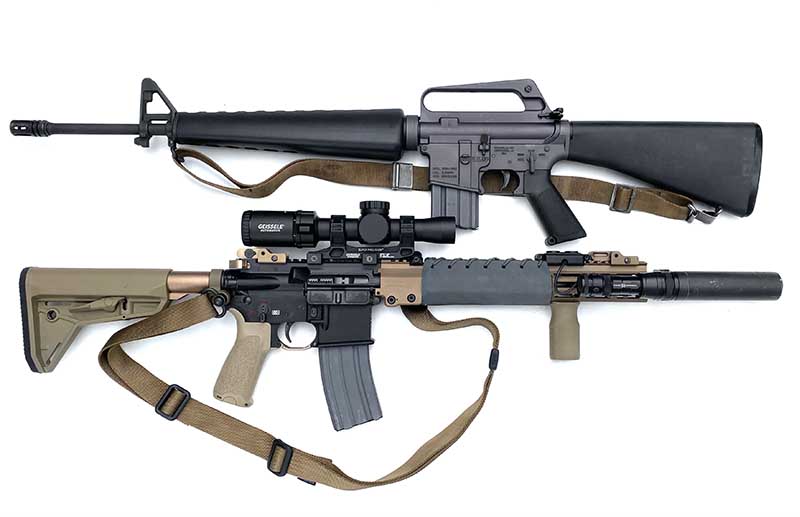
Brownells and the Retro Revival
Brownells surprised the industry when it, a well-known supplier of parts and tools, began to market a brand of retro-style AR parts under their own brand. Coming to the table with replicas of never-before-seen AR models and close to 1:1 copies of long decommissioned military weapons was risky, but it panned out instantly.
The product line did not, however, start out with today’s result in mind.
“We started out in what was essentially an empty market for the retro and replica parts,” says Paul Levy, director of product management at Brownells. “There just wasn’t much out there. We license Nodak Spud’s forgings to our specs, both upper and lowers. We spent lots of time procuring original furniture to make copies, and then we moved to finding authentic barrels with particular sight bases and twist rates. At one point we had all the parts sourced, and we decided, ‘Why not build complete rifles?’”
The guns they began producing made a splash, as many newer shooters had never seen or had access to original-style Vietnam-era AR rifles. Today’s shooters grew up with the AR, but not the AR of the previous generation. Carry handles, iron sights and triangle handguards have all vanished on modern variants. The excitement spread, enthusiasm grew—along with demand for more variants.
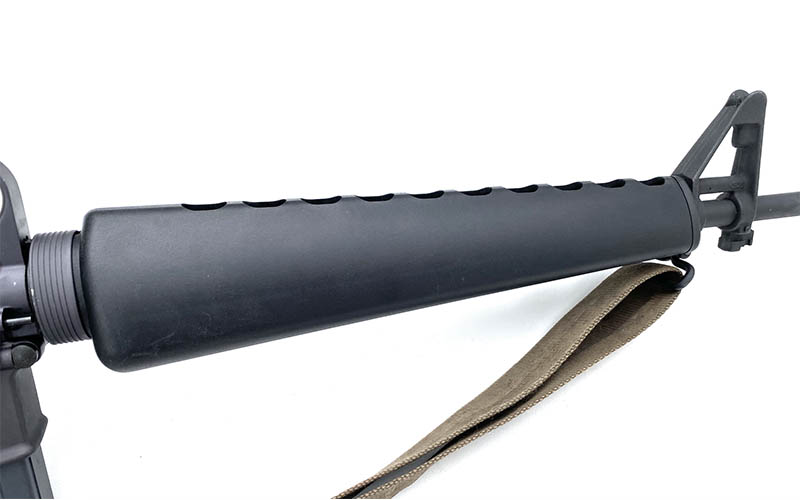
“The older guns reached a value point, probably $1,500, where there was not a great value to buying one,” Levy added. “The market for original Colt parts was dry and costly, and we were pleased to have great engagement from the AR-15 community when we brought these retro products back to the market.
Most of the products in the Retro line are about $1,000 to $1,400. The fact that you can get a factory-new rifle that’s as close to an exact copy of the originals is incredible. Imagine being able to buy a factory new M1 Garand for that price. Compared to what’s out there, the Retro replicas are an extraordinary deal and an example of living history that’ll help preserve the culture for a new generation.
“You can own C&R eligible AR-15 rifles that are 50-plus-years old,” said Levy. “The AR design is not new, and it’s closer in age the M1 Garand than people know. Only 20 years separates them [the Garand being finalized in 1936 and the AR-15 in 1956]. The original guns were so light and handy, and they were made as a system. Our modern versions are adapted and changed, and many people are surprised at how light and soft-shooting the 20-inch M16 is. It’s probably the most elegant of the AR family and really showed that Stoner knew what he was doing when he came up with the rifle.”
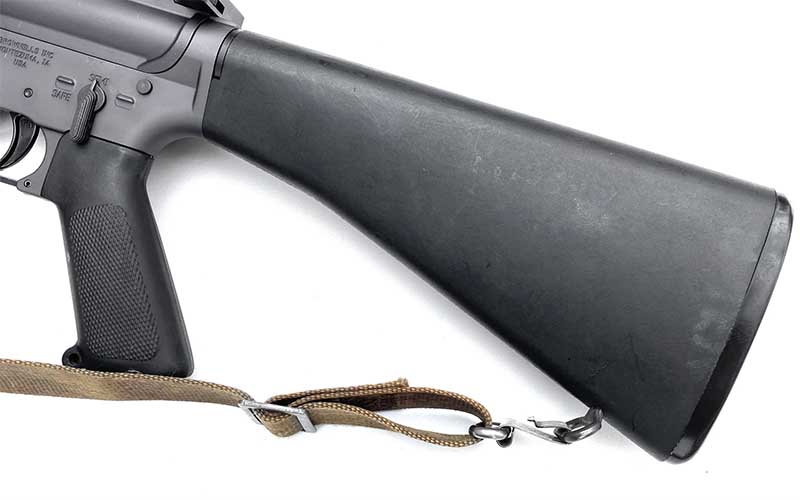
Brownells does sell separate receivers, uppers and many parts and furniture that are comparable with modern AR rifles. You could piece out your own build, or use a retro receiver as the basis of a modern build for added flair. The company has introduced a copy of the original 4X carry handle scope used in Vietnam was well. While not as flashy as an ACOG, it does add some capability and cool factor to your own retro build.
Brownells is producing the BRN-16A1, XBRN-16E1 and XBRN-177 as complete rifles. The other rifles in their Retro lineup are no longer going to be offered as complete guns, but the parts will remain. In addition to the true Retro line, Brownells has also offered modern parts, such as the HK-style BRN-4 should you wish to start a modern USMC build.
Replica Vs. Reproduction
With companies like Brownells producing replicas outright, there has been some discussion as to what constitutes a replica and how many parts are necessary to make something more “original.” What, then, counts as a replica and what counts as a reproduction?

A replica, at least to me, is something that cosmetically, but not necessarily functionally, is as close to identical to the original as possible. The AR-15s out there today that look like the M16A1 are, in my mind a replica—not a reproduction. The military versions made by Colt in the 1960s were fully automatic and had different metal finishes and even variances in parts size and pin diameter over what’s offered commercially today. The Colt SP1 commercial guns are semi-auto variants of the company’s M16, but even those are something of a stand-alone design in that they’re not a direct part-for-part copy of the military rifle.
All the AR rifles today are, despite what I hear from collectors and hobbies circles, in-spirit replicas. I know people who strive for extreme detail in their replicas, but at the end of the day they’re all simply cosmetic look-alikes, not the real deal.
A reproduction gun is something that’s essentially a complete copy of the parts in function and appearance. I’ve seen reproduction Single Action Army revolvers that were so close to an actual Colt that I would’ve put money down that they were. Likewise, I’ve been fooled by a modern M1 Garand copy more than once. This is hard to do with the AR rifle, but not impossible.
Why do people try to build out replicas in the first place? Well, people feel a connection to history. I know a decent number of shooters who won’t touch an Uberti, despite them being great guns and often indistinguishable from a period piece. Other people don’t care about originality, figuring that even a 1970s Colt SAA is technically not the same as one from the 1870s, so they don’t feel the need to pay extra for one.
The M16A1 Clone
The M16A1 clone in this article is a very close in-spirit replica that’s, of course, semi-auto only. The external appearance is extremely accurate to what was issued in the late 1960s and early 1970s. The upper is a Brownells retro line product, complete with a period-correct 1:12 rifling twist. It has a modern bolt carrier group, but this isn’t discernible from the exterior. The lower is also a Brownells Retro model, but it’s stocked with the latest Geissele Automatics parts.

To make it feel more authentic, I tracked down and replaced the Brownells furniture with real M16A1 parts. The handguard, stock and grip are all correct and made, as far as I can tell, in about 1970. The sling is also original but was a gift from a Vietnam vet and was one he actually had in-country during his tour. These parts lend a degree of gravity to the rifle and it, while a new build with match-grade parts, has a feel so close to the original that it has turned heads at the range—and even elicited a few tear-filled memories.
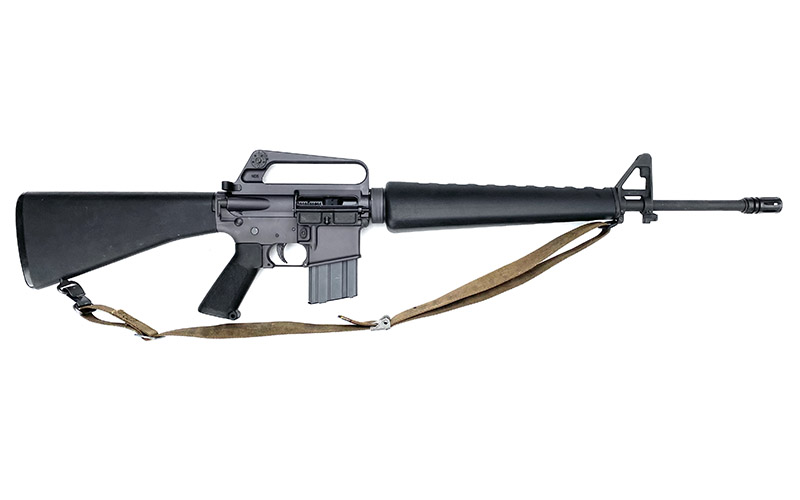
I decided to start a different USASOC URGI build and acquired parts that are quite close. The upper is a real-deal Geissele product that’s as close to the uppers in use today in combat as possible. It’s a near-clone and is functionally identical, but not exactly the same in the origin of some of the parts. It uses the same handguard and rare four-prong SureFire flash hider, which is pinned and welded to make it a proper legal length. The military version is not, as far as I have researched, permanently pinned. The upper carries all the appropriate markings and NSN numbers. It even came with a coveted Velcro patch you can only get with that upper. The patch alone sells for $100 to a dedicated collector.
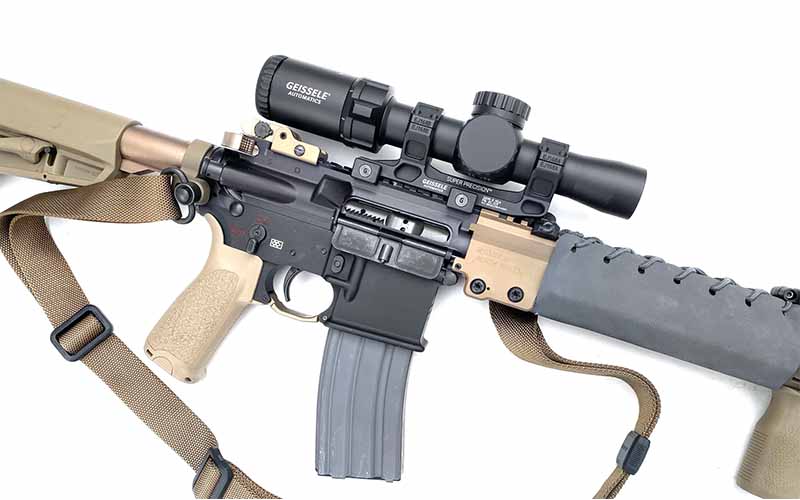
This rifle has a BRN-4 HK-style lower stocked again with Geissele parts. It has an SSA-X Government Trigger, which was a contract overrun. This cosmetically resembles the USMC M27 IAR, but it’s not functionally the same in really any way. In addition, the upper has similar sights, a similar light (Cloud Defensive instead of SureFire), and a correct model SureFire suppressor. The carbine also has a Geissele optics mount that’s correctly issued, but not the issue optic, though it’s functionally similar.
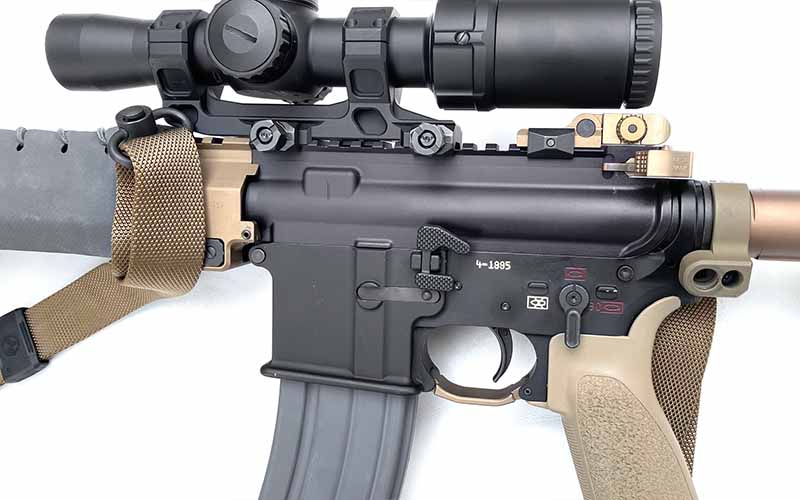
How Close is Close Enough?
When it comes to replicas, reproductions and direct copies or originals, all that matters is that you get what you want out of it. I’ve owned authentic guns from history and owned copies. I believe that, for some people, having the real thing matters. For others, having something that does the same thing without the guilt of potential damage to a historical example is worth more.
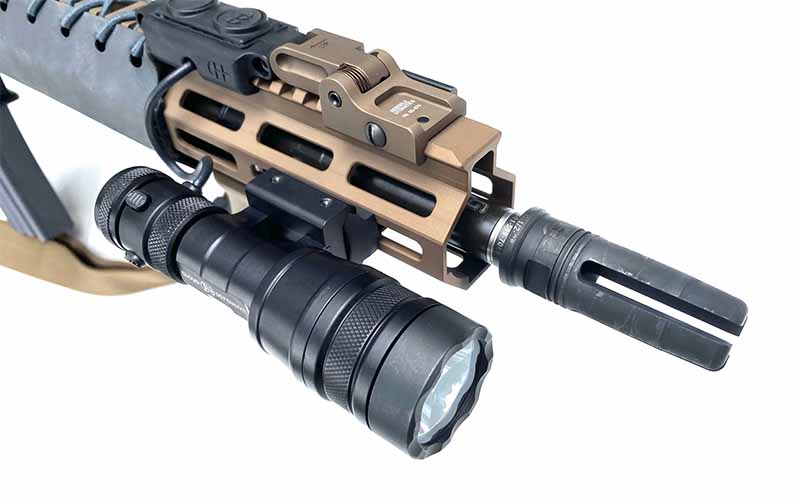
Still, others just want something that they feel connected to, even if it’s a replica of a gun from the movies or fantasy. Replicas can be great as “close enough,” and for many guns like the AR-15 and its military cousins, close enough is all you really get.
Editor's Note: This article originally appeared in the July 2021 issue of Gun Digest the Magazine.
Editor’s Note: Brownells no longer offers complete retro rifles but individual parts are still available.
More On Retro ARs:
- Retro AR-15: The Old Rifles That Inspired The New Ones
- Brownells BRN-Proto Takes On The Earliest AR-15
- Retro Builders Rejoice: H&R AR Parts Go Live
- AR Essentials: Vintage And Retro ARs
- First Look: Colt M16A1 Reissue
- Budget Retro Build: Riton X1 Tactix RRD Review

Next Step: Get your FREE Printable Target Pack
Enhance your shooting precision with our 62 MOA Targets, perfect for rifles and handguns. Crafted in collaboration with Storm Tactical for accuracy and versatility.
Subscribe to the Gun Digest email newsletter and get your downloadable target pack sent straight to your inbox. Stay updated with the latest firearms info in the industry.

![Best Concealed Carry Guns In 2025 [Field Tested] Wilson Combat EDC X9S 1](https://gundigest.com/wp-content/uploads/Wilson-Combat-EDC-X9S-1-324x160.jpg)


![Best 9mm Carbine: Affordable PCCs [Tested] Ruger Carbine Shooting](https://gundigest.com/wp-content/uploads/Ruger-Carbine-Shooting-100x70.jpg)
![Best AR-15: Top Options Available Today [Field Tested] Harrington and Richardson PSA XM177E2 feature](https://gundigest.com/wp-content/uploads/Harrington-and-Richardson-PSA-XM177E2-feature-100x70.jpg)

So I started on the M16A1 when I first enlisted almost 40 years ago, ended with the M4….. that’s a lot of change and history. The old M16 was fun to shoot and was very simple to operate. I do get the nostalgia urge to build an A1 clone from time to time, but functionally it’s not practical anymore.